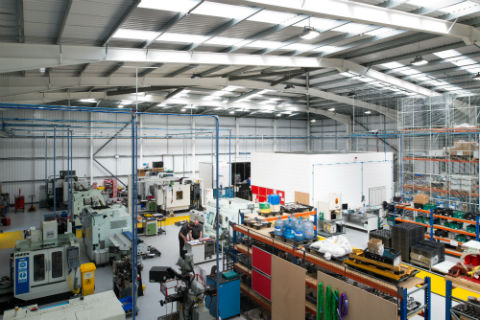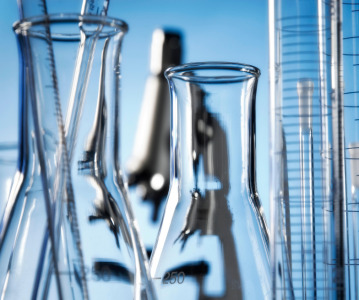Technology and managing risk within the high potency drug sector

Manufacturing high potency drugs - the challenges and innovations to mitigate the risks.
The huge global demand within potent drug production - whether this be in the development of antibody drug conjugates (ADCs) or in the need for conventional drug manufacturing - is encouraging requests for high potency handling and, therefore, a need for high-containment facilities. Michael Avraam, global product manager at ChargePoint Technology for the PharmaSafe range of products, talks to CPHI Online about the risks, challenges and innovation in today's high potency drug sector.
How is demand for high potency manufacturing affecting the industry?
The increasing demand for the capability to handle high potency drugs is having a significant impact on the sector. Many existing manufacturing facilities, unfortunately, do not have these facilities and therefore companies are needing to upgrade, develop, and sometimes even construct new facilities to meet customer needs. These facilities have also had to be designed to be easily adaptable for the variation in production that high potency drugs can bring. This rising demand has also placed an importance on selecting the right outsourcing partners to offer these specialist capabilities, which is shaping the contract manufacturing landscape. If a prospective partner can demonstrate the ability to be flexible in the containment solutions they offer, particularly in their capacity to scale up production and be proactive, they will be more successful.
Where do the challenges lie in the manufacture of high potency drugs?
The most significant challenge will always lie in the handling of these ingredients across the supply chain. Not only regarding which equipment is needed to ensure product protection and avoidance of cross-contamination, but also in the importance of operator and environmental safety. Employees and their environment need to be shielded from exposure to these drugs and their safety rests on the manufacturer’s ability to select the correct containment solution to suit the process. How this solution is selected, installed and set-up is of vital importance as it will impact the overall safety. Appropriate and ongoing training is therefore essential, as well as the continuous monitoring of operations to guarantee maximum protection and that safety is always put first. Due to the complex nature of high potency drugs, finding a balance between ensuring safety whilst maintaining productivity and operability can present another challenge. This often requires upgrading or investing in new equipment which can be particularly challenging for smaller manufacturers.
In what other ways can risk be controlled when using high potency ingredients?
Technology plays a big role in minimising the risks associated with potent compounds. Some examples include rigid and flexible barrier isolators, which offer good levels of containment security. Extracted booth technology can also assist in handling larger operations as it can give a secondary level of containment protection. New design technologies also assist in removing the risk of airborne exposure, and have been the key to achieving high containment in recent years. Split butterfly valves (SBVs) have evolved over the last 25 years with the rise in high potency manufacturing and have presented a novel and versatile approach that can be easily integrated across containment solutions. The use of closed containment systems such as this minimise risk, without damaging productivity.
How is technology continuing to shape the high potency industry?
Ultimately, advancements in technology have driven the changes we are witnessing in manufacturing facilities, and they will continue to do so in the future. Technology aimed at reducing risk will continue to be the number one priority. The future presents opportunities such as using robotics to remove all physical human interaction with harmful substances. Industry 4.0 has already begun to take hold in the automation of systems across the board.

Related News
-
News Ophthalmologic drug product Eylea faces biosimilar threats after FDA approvals
Regeneron Pharmaceutical’s blockbuster ophthalmology drug Eylea is facing biosimilar competition as the US FDA approves Biocon’s Yesafili and Samsung Bioepis/Biogen’s Opuviz. -
News ONO Pharmaceutical expands oncology portfolio with acquisition of Deciphera
ONO Pharmaceutical, out of Japan, is in the process of acquiring cancer-therapy maker Deciphera Pharmaceuticals for US$2.4 billion. -
News First offers for pharma from Medicare drug price negotiations
Ten high-cost drugs from various pharma manufacturers are in pricing negotiations in a first-ever for the US Medicare program. President Biden’s administration stated they have responded to the first round of offers. -
News Eli Lilly’s Zepbound makes leaps and bounds in weight-loss drug market
In the last week, Eli Lilly has announced their partnership with Amazon.com’s pharmacy unit to deliver prescriptions of Zepbound. Zepbound has also surpassed Novo Nordisk’s Wegovy for the number of prescriptions for the week of March 8.&nbs... -
News Chasing new frontiers at LEAP – The National Biotechnology Strategy Keynote
On the third day of LEAP (4–7 March 2024, Riyadh Exhibition and Convention Centre, Malham, Saudi Arabia) the CPHI Middle East team hosted the Future Pharma Forum, to set the scene for an exciting new event for the pharma community, coming to Riya... -
News Pfizer maps out plans for developing new oncology therapeutics by 2030
Pfizer dilvulges plans to investors around growing their cancer portfolio, and the drugs they will be focusing on developing after their aquisition of Seagen in 2023. -
News Generics threat to Merck’s Bridion as Hikma seeks pre-patent expiry approval
Merck has disclosed they received notice from Hikma Pharmaceuticals for seeking a pre-patent expiry US FDA approval for Hikma’s generic version of Merck’s Bridion. -
News Bernie Sanders vs Big Pharma - the latest on drug price negotiations
In a hearing in front of the US Senate, three of the biggest pharmaceutical companies in America are challenged over exorbitant prescription drug prices, with Sanders claiming their actions are limiting the population's access to affordable healthc...
Position your company at the heart of the global Pharma industry with a CPHI Online membership
-
Your products and solutions visible to thousands of visitors within the largest Pharma marketplace
-
Generate high-quality, engaged leads for your business, all year round
-
Promote your business as the industry’s thought-leader by hosting your reports, brochures and videos within your profile
-
Your company’s profile boosted at all participating CPHI events
-
An easy-to-use platform with a detailed dashboard showing your leads and performance
.png)

.png)
.png)


.png)
.png)